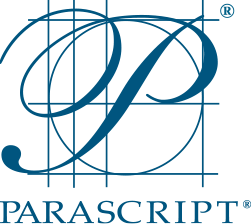Selecting the right threshold for a specific application is very important as it determines the accuracy of the accepted answers and the amount of manual labor required. Finding this threshold requires some work, but it will definitely pay off. How does it work? When performing recognition or verification, the software evaluates an image and provides […]
3 Ideas to Optimize New Account Application Form Processing
“There’s no business like new business!” Or perhaps better said, “there’s no more expensive business than new business!” In most businesses, developing and onboarding new business takes a lot more effort than retaining or growing existing business. That’s part of the reason so much attention has been turned to customer loyalty, retention, and engagement. Regardless, […]
Form Design Enhancements to Maximize Capture and Recognition
Form design plays a critical role in the success of capture and recognition. Using the right design elements significantly impacts speed and improves accuracy rates, just as incorrectly designed forms result in increased manual processing. While these days most forms are available online allowing users to fill out the information directly on the computer, there […]
3 Basic Rules for Capturing Clean Images
Image capture is the first step to successful document recognition. Image capture might not be under your control, but if it is, here are 3 simple rules to follow:
Don’t Have Drop Out Forms? Use Template Removal!
A great way to improve recognition results in general is to use a drop out form whenever possible. These forms are printed with ink that can be “dropped out” by the scanner during image capture (usually red). What you’re left with is a nice white page with nicely positioned data. Using drop out templates is […]
Form Design: Quick Tip to Make Your Forms Smarter
Form design is essential to the success of recognition technology. Forms should be well designed to reduce illegible, inaccurate, misinterpreted or missing data, and to improve data recognition. It’s not always the case that you will be able to control the forms that you need to handle, but even if you can’t, often you can […]
7 Reasons to Scan Documents in Full Color
Do you need to scan a variety of documents from various sources? Do the originals contain some color, a little color or a lot of color affecting the form elements? Do you wonder what settings will produce the best quality? Or what is the best choice for scanning documents into your workflow? These questions are […]
3 Tips for Getting Project Buy-In
What’s the secret to getting project buy-in when you don’t have specific budget or authority? We’ve all heard it a million times. If you want to get something done inside an organization, and you don’t have budget or authority, you need a sponsor. That’s easy to say for a management professor. But in the trenches […]
Understanding Recognition: Reject Mechanism
Let’s explore the mathematical model for optimizing the tradeoff between errors and rejects. The reject mechanism helps to guarantee the specified error level required by an application. Recognition engines usually return an answer accompanied by a value parameter called confidence value. The confidence value ranges from 0 to 100 and indicates how confident the engine is that […]
Understanding Recognition: Errors and Rejects
There are 3 possible outcomes when recognition engines attempt to read any data: the correct answer, error, or reject. This post will focus on understanding errors and rejects and how to find the right balance between them. Errors refer to the instances when a recognition engine gives an incorrect result. The problem with errors is […]
Big Decision Coming Up? A Process for Making Better Choices
By Don Dew, Director of Marketing Do you have a big decision coming up? Whether buying a car, looking for a job, or evaluating capture software, one thing is for certain. As a human, your likelihood of making the best decision is, frankly, flawed out of the gate. The good news is, with a little […]
Vocabularies and ICR – Why You May Not Be Getting The Results You Expect
The goal of every recognition engine is to produce the highest accuracy possible which is probably pretty obvious (who uses technology to get poor results?). But did you know that the type and quality of images being recognized can and often produces significantly different results, depending upon which recognition technology is used? For example, in […]
